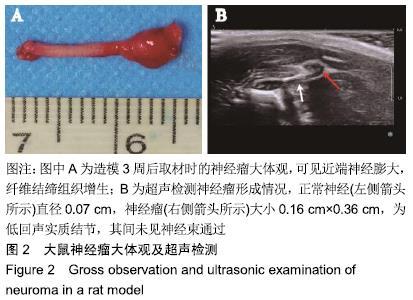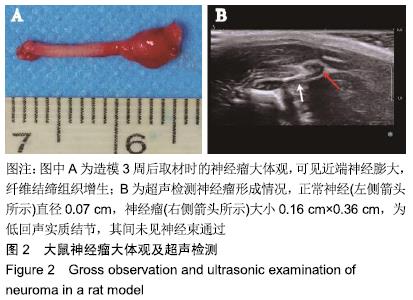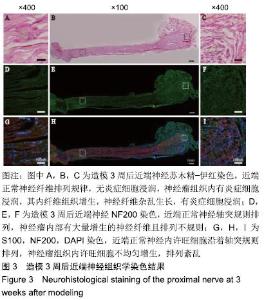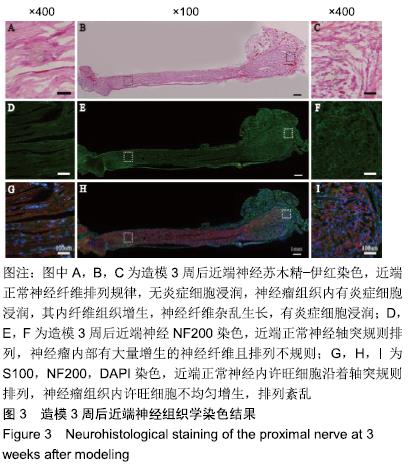[1] VLOT MA, WILKENS SC, CHEN NC, et al.Symptomatic Neuroma Following Initial Amputation for Traumatic Digital Amputation.J Hand Surg Am.2018;43(1): 86 e81-86 e88.
[2] 黄永旺,范学政.几丁糖与聚乳酸合成生物材料修复周围神经缺损[J].中国组织工程研究, 2015,19(25): 4059-4063.
[3] SINIS N, HAERLE M, BECKER ST, et al.Neuroma formation in a rat median nerve model: influence of distal stump and muscular coating.Plast Reconstr Surg.2007;119(3): 960-966.
[4] MICHNO DA, WOOLLARD ACS, KANG NV. Clinical outcomes of delayed targeted muscle reinnervation for neuroma pain reduction in longstanding amputees.J Plast Reconstr Aesthet Surg.J Plast Reconstr Aesthet Surg. 2019 May 17. pii: S1748-6815(19)30205-0.
[5] LIU JK, DODSON VN, JYUNG RW.Translabyrinthine Approach for Resection of Large Cystic Acoustic Neuroma: Operative Video and Technical Nuances of Subperineural Dissection for Facial Nerve Preservation.J Neurol Surg B Skull Base. 2019;80(Suppl 3):S267-S268.
[6] ABREU E, AUBERT S, WAVREILLE G, et al.Peripheral tumor and tumor-like neurogenic lesions.Eur J Radiol. 2013;82(1): 38-50.
[7] 肖海军,侯春林,薛锋.羧甲基壳聚糖-羧甲基纤维素膜对周围神经粘连形成及再生能力的影响[J].中国组织工程研究与临床康复, 2009,13(34): 6680-6684.
[8] CHEN W, ZHANG H, HUANG J, et al.Traumatic neuroma in mastectomy scar: Two case reports and review of the literature. Medicine (Baltimore).2019;98(15): e15142.
[9] SHAH MH, KASABIAN AK, KARP NS,et al.Axonal regeneration through an autogenous nerve bypass: an experimental study in the rat.Ann Plast Surg.1997;38(4): 408-414; discussion 414-405.
[10] KERNS JM, SLADEK EH, MALUSHTE TS, et al.End-to-side nerve grafting of the tibial nerve to bridge a neuroma-in- continuity.Microsurgery.2005;25(2): 155-164; discussion 164-156.
[11] 曹洪艳,陈定章,丛锐,等.周围神经创伤性神经瘤的超声诊断[J].中华超声影像学杂志,2008,17(7): 615-617.
[12] 贺凡丁,卢漫,岳林先,等.地震伤员创伤性神经瘤的超声诊断[J].实用医院临床杂志,2014,11(4): 111-113.
[13] KEILHOFF G, FANSA H, SMALLA KH, et al. Neuroma: a donor-age independent source of human Schwann cells for tissue engineered nerve grafts.Neuroreport.2000;11(17): 3805-3809.
[14] ANAND P, TERENGHI G, BIRCH R, et al.Endogenous NGF and CNTF levels in human peripheral nerve injury. Neuroreport. 1997;8(8): 1935-1938.
[15] ZHANG Z, ZHANG C, LI Z, et al.Collagen/beta-TCP nerve guidance conduits promote facial nerve regeneration in mini-swine and the underlying biological mechanism: A pilot in vivo study.J Biomed Mater Res B Appl Biomater.2019;107(4): 1122-1131.
|



